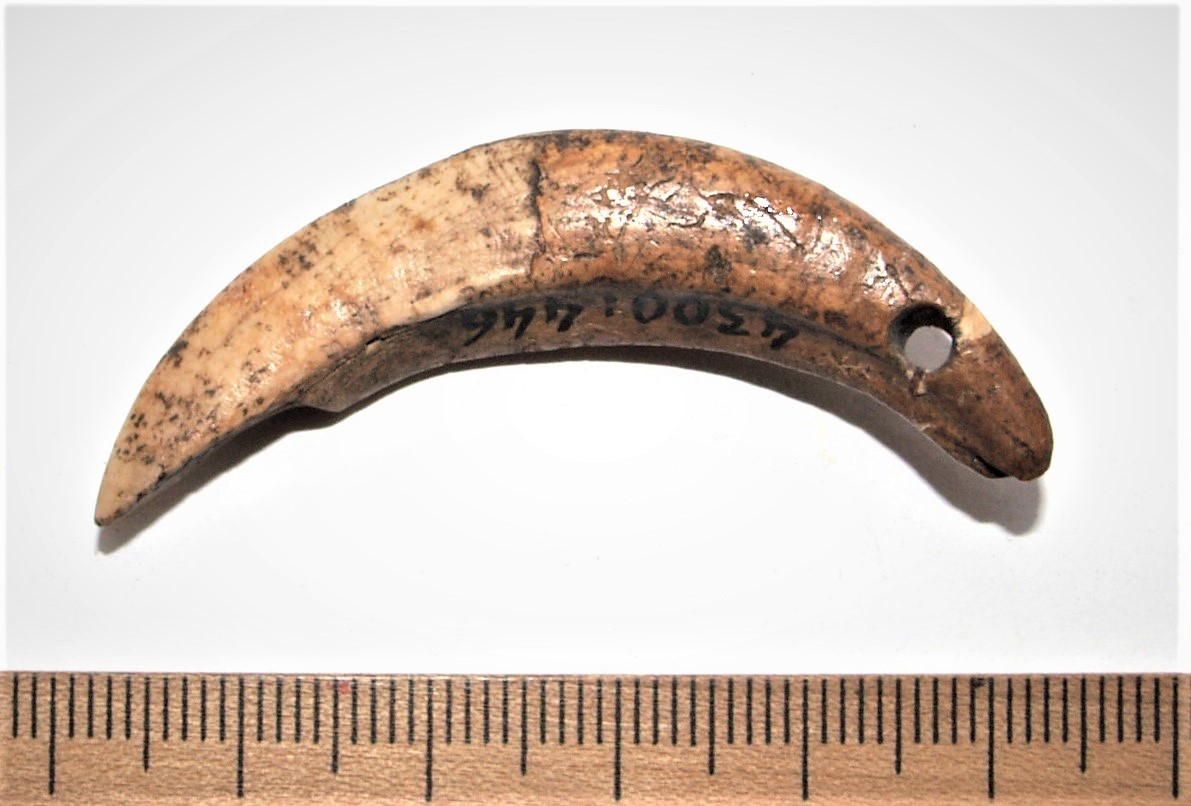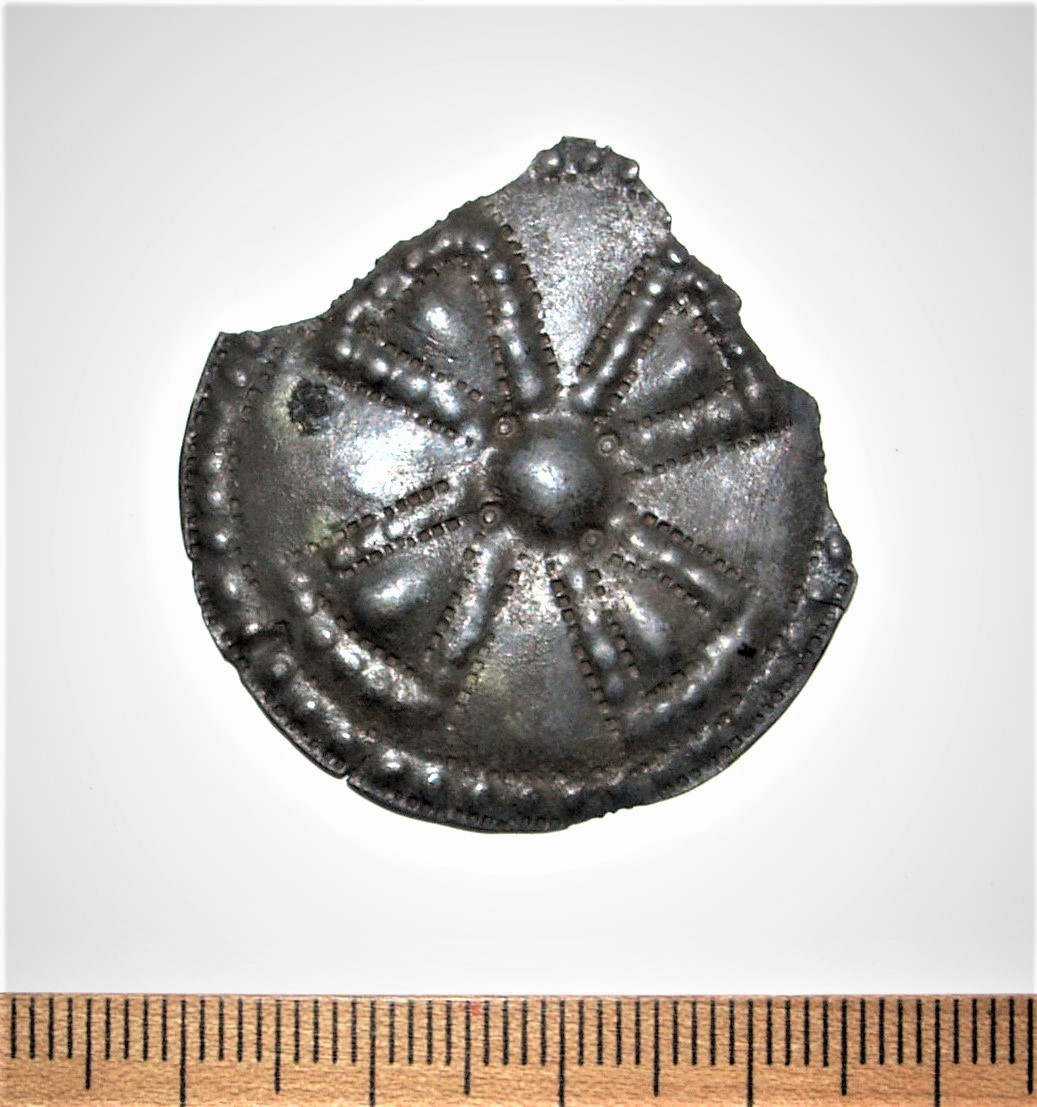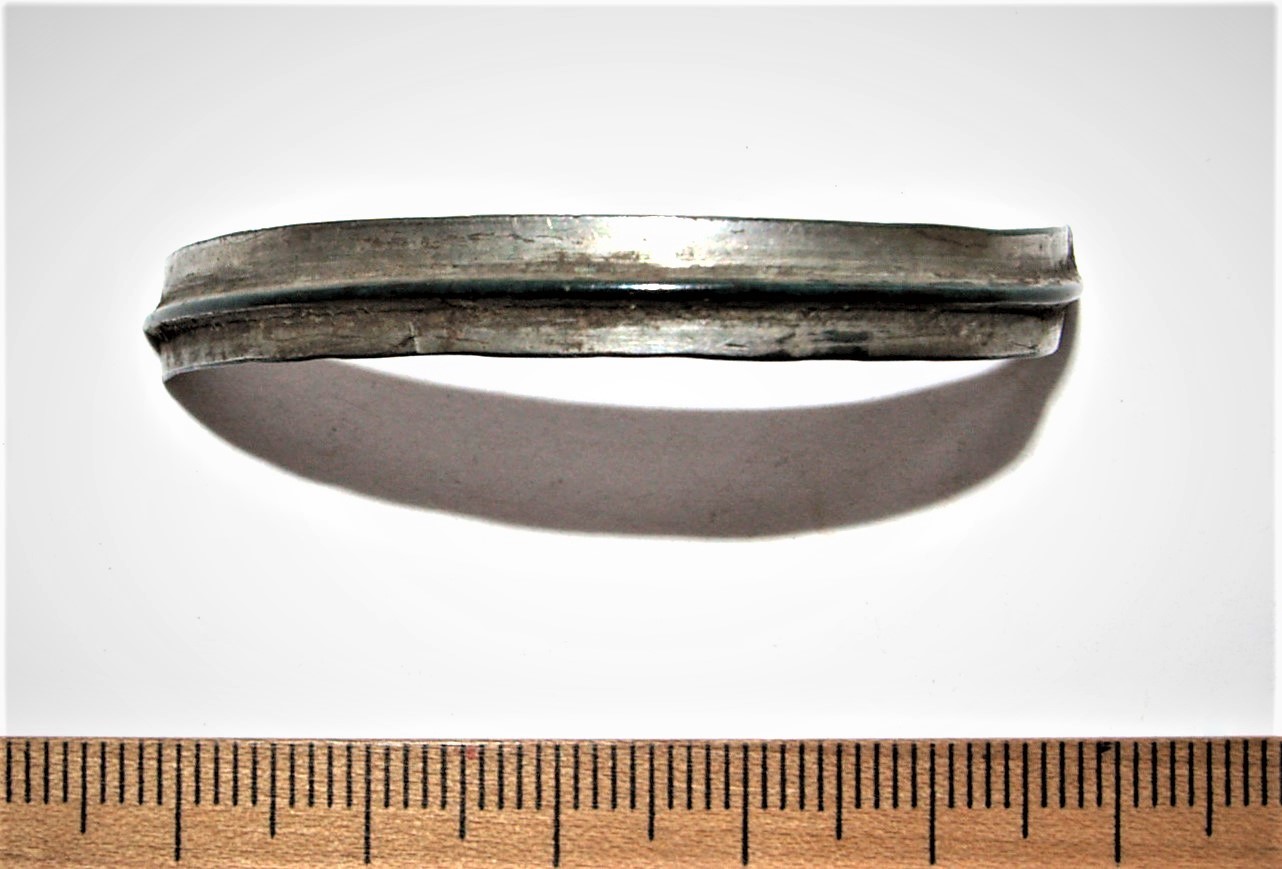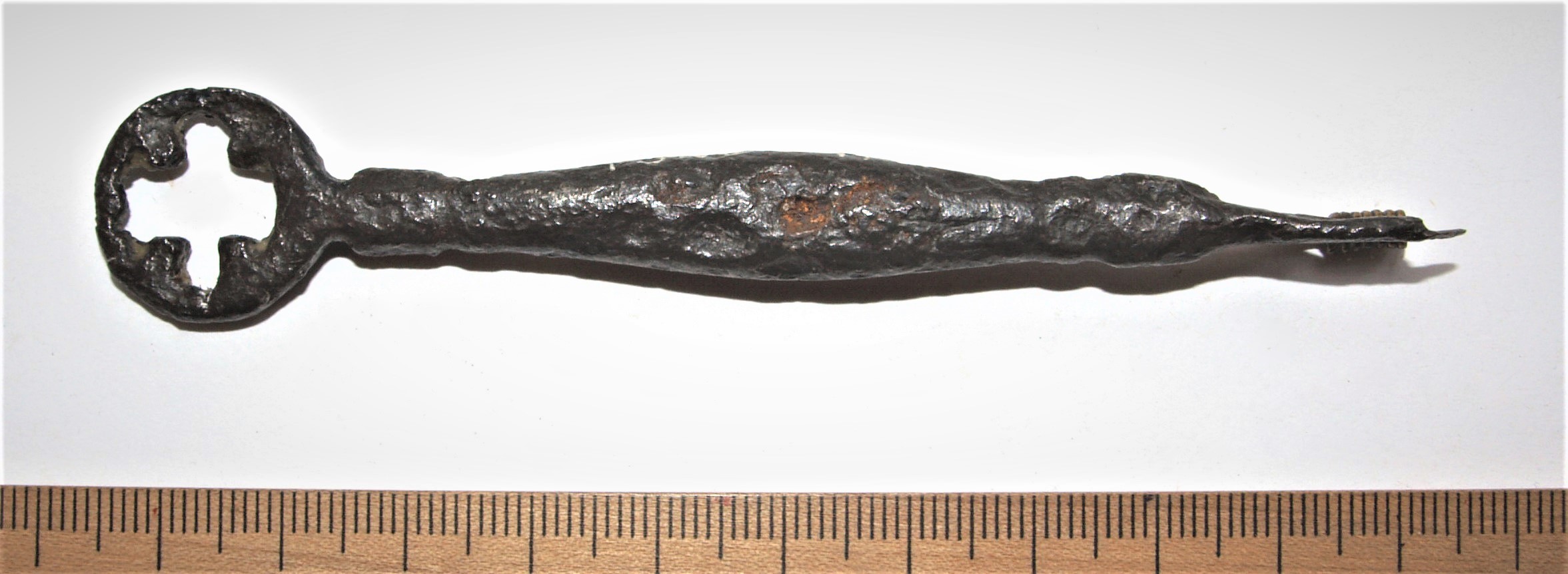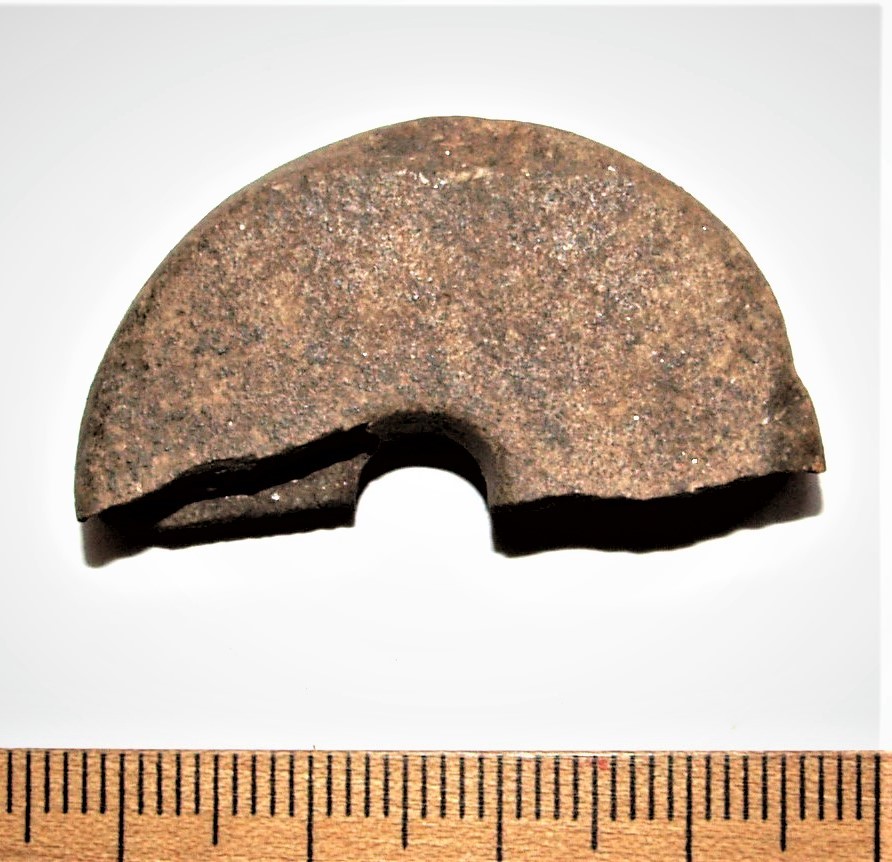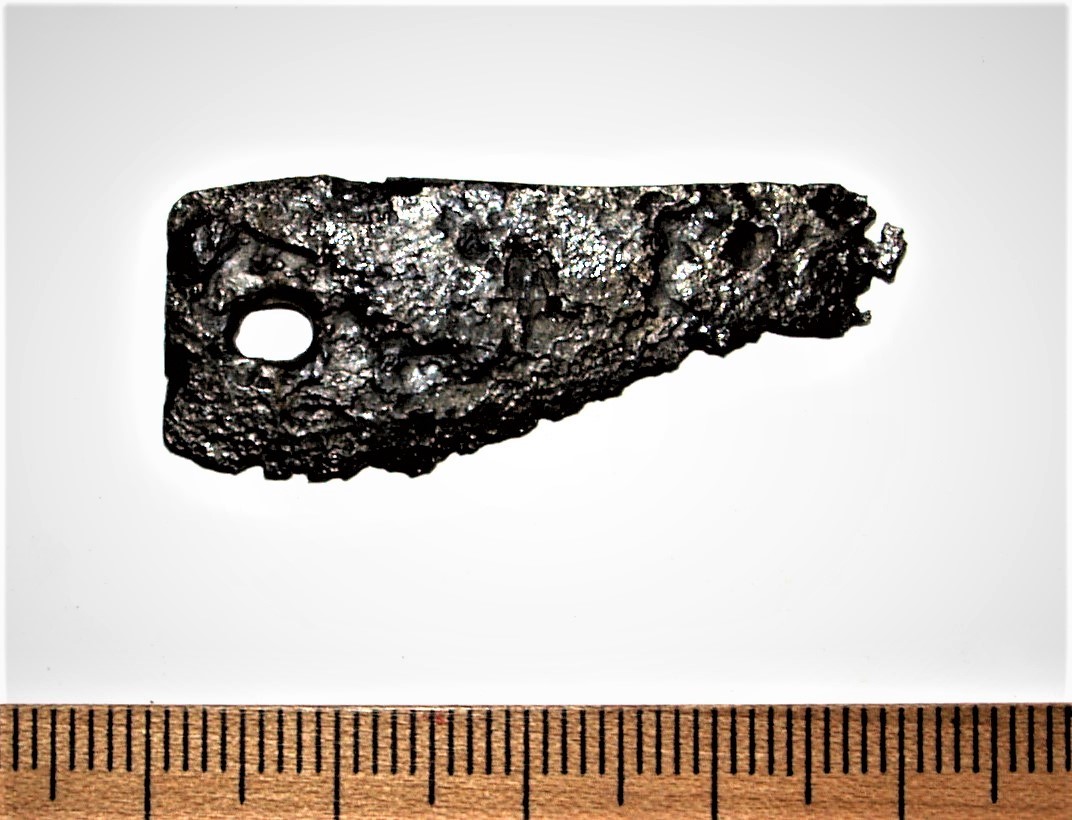Database
Our database is free to use for all history and archaeology enthusiasts. If you use our database, please do not forget to cite correctly:
Mägi, Marika; Palm, Piia Sandra. Archaeological Artefacts of Saaremaa. Foundation Osiliana / Tallinn University. Accessed: date.
The Osiliana Archaeological Database presents artefacts from Saaremaa and the surrounding small islands.
The database contains mainly Iron Age and Medieval finds that can be classified.
Undated metal or other pieces were generally excluded from the database.
Ceramics are represented by isolated examples.
The database is a work in progress and is constantly being updated.
Valjala hillfort
Penannular brooch, silver (?). Knob-shaped terminals. The ring has grooved thicker middle part, transversely grooved.



Penannular brooch, silver (?). Knob-shaped terminals. The ring has grooved thicker middle part, transversely grooved. Similar brooches are often found in 13th-14th-century inhumation graves and only seldom in stone graves with cremations. In Karja, such brooch was registered in an inhumation dated to the second half of the 13th century (Mägi 2002, Pl. 125: 1–2), but in Siksälä, South-East Estonia, they also occur in 14th-century graves (Valk et al 2014).
Literature:
Mägi, M. 2002. At the Crossroads of Space and Time. Graves, Changing Society and Ideology on Saaremaa (Ösel), 9th–13th centuries AD. CCC papers: 6. Gotland University College, Centre for Baltic Studies; Institute of History, Department of Archaeology. Tallinn, 2002. Loe raamatut: siin. Vaata arheoloogiliste leidude jooniseid: siin.
Valk, H., Ratas, J., Laul, S. 2014. Siksälä kalme II. Matuste ja leidude kataloog. Tartu Ülikool: Tartu.
Valjala hillfort
Buckle, bronze. Typical female belt buckle with round front part. Such buckles were in both ends of the belt and were fixed with, for instance, iron or bronze hook.



Buckle, bronze. Typical female belt buckle with round front part. Such buckles were in both ends of the belt and were fixed with, for instance, iron or bronze hook. This type of buckles occur often in 13th-century inhumation burials in Saaremaa and coastal Estonia (Mägi et al. 2019, 97; Lõhmus et al. 2018), but sometimes also in cremations at stone graves (Mägi 2002, 99, P. 139: 1).
Literature:
Mägi, M. 2002. At the Crossroads of Space and Time. Graves, Changing Society and Ideology on Saaremaa (Ösel), 9th–13th centuries AD. CCC papers: 6. Gotland University College, Centre for Baltic Studies; Institute of History, Department of Archaeology. Tallinn, 2002. Read the book: here. Look at the drawings of the archaeological excavations: here.
Mägi, M.; Malve, M. & Toome, T. (2019). Early Christian burials at Valjala churchyard, Saaremaa. – Archaeological Fieldwork in Estonia 2018, 93−118, 109. Read the article: here.

Bone toggle.
Literature:
Luik, H. 2004. Luuesemed hilisrauaaja linnamägedel Lõhavere, Soontagana, Varbola ja Valjala leidude põhjal. – Toim. A. Haak, E. Russow & A. Tvauri. Linnusest ja linnast. Uurimusi Vilma Trummali auks. Muinasaja teadus, 14. Tallinn, Tartu, 157–188.
Luik, H. 2005. Luu- ja sarvesemed Eesti arheoloogilises leiumaterjalis viikingiajast keskajani. Tartu Ülikool, Filosoofiateaduskond, Ajaloo osakond. Tartu: Tartu Ülikooli Kirjastus. Loe doktoritööd: siin.

Tooth pendant.
Literature:
Luik, H. 2004. Luuesemed hilisrauaaja linnamägedel Lõhavere, Soontagana, Varbola ja Valjala leidude põhjal. – A. Haak, E. Russow, A. Tvauri (Toim.). Linnusest ja linnast: uurimusi Vilma Trummali auks = About hillfort and town: studies in honour of Vilma Trummal (157−188). Tallinn, Tartu: Eesti Teaduste Akadeemia Kirjastus. (Muinasaja teadus; 14). Read the article (ENG conclusion p. 185-188): here.
Valjala hillfort
Round silver sheet pendant, decorated with cross motive.
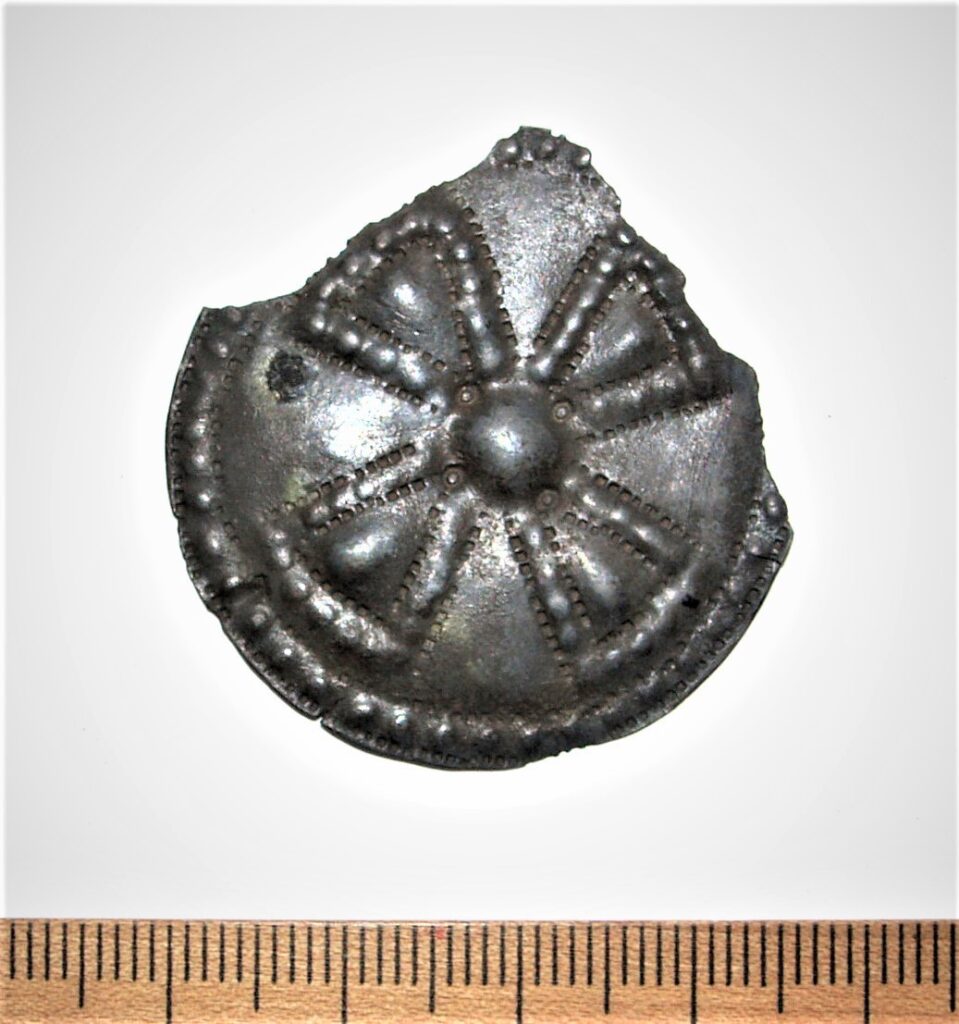
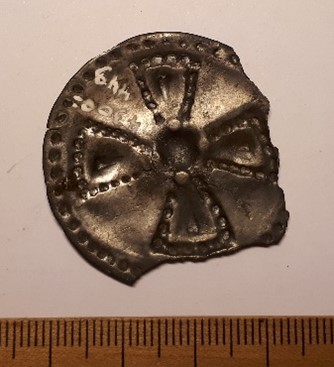
Round silver sheet pendant, decorated with cross motive.
Literature:
Kurisoo, Tuuli. 2021. Adornment, self-definition, religion: Pendants of the north-eastern Baltic Sea region, 9th-13th century. Kiel/Hamburg: Wachholtz Verlag.
Valjala hillfort
Fragment of a silver bracelet.


Fragment of a silver bracelet.


Padlock key, iron. The key belongs to Kolchin´s group A that is dated to the 10th – 12th centuries based on keys found in Novgorod (Колчин 1959, 78–80). Similar keys in Latvia are dated to the same period (Mugurēvičs 2008, 89).
Literature:
Колчин, Б. А. 1959. Железообрабатывающее ремесло Новгорода Великого. Материалы и исследования по археологуу СССР 2: 65, 7–120.
Mugurēvičs, Ē. 2008. Viduslaiku ciems un pils Salaspils novadā, Rīga.


Spindle whorl.
Valjala hillfort
Drawknife or leather tanning tool.

Drawknife or leather tanning tool (Vasks 2010). Dated according to the find contect.
Literature:
Vasks, A. 2010. Slīmests vai ādu apstrādes rīks. – Latvijas Vēstures Institūta Žurnāls, 2, 5–13.
The negative value refers to time Before Christ.



